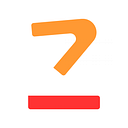Executing an IT project requires you to depend on the software that is well documented and has a better and active developer community. Having an active community and strongly responding developer community helps in searching out information for your project easier.
The active support and a great performance from the software help in steering programming and fixing bugs. Even the blockchain system’s development is more similar to this. Thus, opting for Distributed Ledger Technology (DLT) can be an advantageous option if users want to derive out information.
So, let us talk more about it below.
Criteria to look out for:
So, in recent finding, it is concluded that Blockchain Research Lab had been associated with selecting the DLT to facilitate the DiBiChain blockchain project. To make the products more optimized, this project was liable enough for creating a virtual picture of the product’s life cycle.
From the vast list of available DLT creation services, any one of them can be used to formulate DibiChain. So, among the large number of DLTs, anyone with the vastest technical characteristics can be used.
However, there are many other criteria that you can consider before selecting the apt Distributed Ledger Technology, like the documentation’s quality, how well the community is active and how popular the technologies are.
Study of 15 different DLT technologies:
Some recent reports have been published as an assessment based on the explorative scrutiny of resources and community of candidate technologies. In that report, 15 different DLT implementation and integration technologies were scrutinized based on the present document, their popularity, and how effective the developer’s community is.
The 15 technologies, which were scrutinized, are also studied based on the connection with resources such as Whitepapers, documentation, video channels, Whitepapers, and chats. The name of the DLT technologies is Bitcoin, Cosmos, Corda, Hedera Hashgraph, Hyperledger Fabric, Ethereum, Hyperledger Iroha, IOTA, Hyperledger Sawtooth, Quorum, Tupelo, MultiChain, WRMHL, Stellar, and Tendermint.
The result after scrutinization:
Upon scrutinizing, it is found that technologies that are of Hyperledger, Corda, Ethereum, Quorum, Bitcoin, Tendermint, Hedera Hashgraph, and Stellar have complete documentation amongst others.
However, all DLT implementation technologies have a dedicated community for group chats with developers that can be contacted and be asked for help.
Utilizing the GitHub metrics:
Another analysis was made with the GitHub metrics for finding the collaborative effort made by the open-source DLTs in comparing one another. On GitHub, analysis was based on three things, i.e., the “fork,” “stars,” and “commits.”
These three metrics determine DLT’s effort on helping the public with a generalized interest in knowledge and also analyze the effort that was devoted by the Distributed Ledger Technology.
So, here somebody utilizing “stars” means it points out a certain that technology has helped them throughout the project, and they want them to take their help in the future. The term number of “forks” refers to the number of projects that the developers have worked on. And from the developer’s side, they use “commits” to deliver the changes that they have made in the project and distributed them to the common people.
So, based on all three factors mentioned above, Ether and Bitcoin came on top considering all three factors.
On the other hand, Hyperledger Fabric performed well when compared to other technologies in terms of several forks and stars. This makes it certain that their community has a solid curiosity for this particular technology.
In contrast, others such as Corda, Stellar, Quorum, and Tendermint were close in terms of “stars” and “forks.” Ethereum, Quorum, and Hyperledger Fabric have an equal number of commits, and that determines their dedication towards the project. However, Quorum technology is a part of Ethereum. Thus, it gets all the commits obtained from the parental project of Ethereum.
And to trace out if the development of DLT integration technologies is still going on actively, the particular date of the newest “commits” need to be considered. This explains if the technology is actively participating or not.
Hence, only two from the long list have last been active for one month. Like MultiChain and Cosmos, these technologies have been active in the last eight months and three months, respectively. And this, therefore, determines that most of the current open-source-based development communities are inactive.
Conclusion
It is derived that the study here unfolds the differences between different DLT blockchain technologies.
Technologies and their developer community such as Bitcoin, Ethereum, Stellar, Quorum, Tendermint, Corda, and Hyperledger Fabric have done better work by investing their time and effort on delivering the project.
On the contrary, many other technologies have better resources that can support the better development and formulation of the blockchain project.
So, all these analyses and their result can help you determine which Distributed Ledger Technology to consider, so that can be useful for your project and help you advance your DLT-related project.
